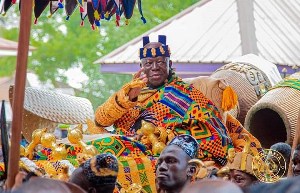- Home - News
- TWI News | TV
- Polls
- Year In Review
- News Archive
- Crime & Punishment
- Politics
- Regional
- Editorial
- Health
- Ghanaians Abroad
- Tabloid
- Africa
- Religion
- Election 2020
- Coronavirus
- News Videos | TV
- Photo Archives
- News Headlines
- Press Release
Opinions of Monday, 22 March 2021
Columnist: aviationghana.com
Coronavirus: Diversity crucial to aviation industry's restart
The IATA’s 25by2025 initiative will be the key enabler. An industry-wide diversity and inclusion project, 25by2025 aims to increase the number of women in senior positions by either 25% against currently reported metrics or to a minimum representation of 25% by 2025.
The project is designed to be encouraging rather than punitive, hence the realistic targets.
Organizations could lose interest if they deem a goal unachievable.
But that doesn’t mean the industry can relax in its diversity efforts, says Hoskisson.
“Women pilots represent about 6%-9% of total pilots,” she says.
“It seems we’ve heard a lot more about female pilots recently but actually that figure has been pretty consistent since 1945. We won’t get to 25% by 2025 because we know the pipeline takes some time to build, but we can move towards a more ambitious target.
“And female airline CEOs are newsworthy simply because they are female and so few and far between. That shouldn’t be the case.”
Nevertheless, the strong response to 25by2025 shows the industry’s determination to do better. So far, 57 signatories have committed to the initiative. Even during the pandemic interest in 25by2025 has continued to grow and Malaysia Airlines is the latest to join. For Hoskisson, this is a sure sign that diversity remains a top priority despite aviation’s struggle for survival.
“There have even been approaches by non-airline aviation companies and by those that are already beyond 25% female representation but that want to move toward parity,” says Hoskisson.
The heart of travel
Diversity and inclusion are essential to the industry’s recovery as the search for talent must be broad in its scope.
Also, as travel, tourism and aviation restarts, women will be at the heart of travel decisions for families and personally. One of the biggest emerging markets is solo travel and women continue to travel on their own more than men.
Aviation must therefore develop products and services that accurately reflect their customers and having female representation at all levels of the organization will aid that quest.
A recent McKinsey report, Women Matter, states that “companies where women are most strongly represented at board or top-management level are also the companies that perform best.”
Furthermore, aviation needs to reflect the diversity it connects across the world. The nature of the industry, the business of freedom, necessarily dictates a diverse and inclusive culture.
Good to talk 25by2025 isn’t prescriptive so has inbuilt flexibility to allow airlines to decide their own targets by setting a target of 25%, or a 25% improvement on their existing situation.
One airline is focused on getting more males working in the cabin, for example. The individual targets are then aggregated by IATA to determine the overall success of the project.
Every quarter, representatives from all signatories will come together to share best practice and discuss ideas for improving collaboration and promoting the issue at CEO level.
“It is about creating a community and giving diversity officials the opportunity to meet and talk with each other,” says Hoskisson. “That hasn’t happened before.”
IATA will also work internally to improve its diversity levels. It plans female representation on all panels at conferences, for example, and even aims to ensure 25% female representation on its various committees.
Accordingly, IATA is asking all airlines to consider diversity when nominating people to IATA committees.
Already, the number of female senior leaders and directors in the association has increased from 16% to 22%.
Raising the bar
Two elements will be critical to the future success of the initiative.
Training will be essential to prepare the next level of women pilots and technicians as well as senior leaders. Enlarging the pool of talent available will be crucial to improving diversity levels.
And legislation must be brought up to date in all countries to ensure parity of pay, maternity and paternity leave, and flexible working conditions.
In the United Kingdom, where reporting is mandatory, aviation has been shown to have large pay gaps with men paid more than women in comparable positions.
The pandemic has actually proven helpful in one respect as working from home has brought a greater understanding of the need for flexibility. But there is nothing like a legal requirement to focus business strategy.
“IATA’s 25by2025 is more than merely getting women at the top table,” concludes Hoskisson. “It is about collaboration to get more talent in the industry. It is about raising the bar for everybody. The industry recovery will be stronger if diversity is embedded across the aviation value chain.”
“The industry restart is an opportunity for aviation to build back better with diversity at its core,” Jane Hoskisson, IATA’s Director, Talent, Learning, Engagement and Diversity.
Entertainment










